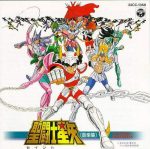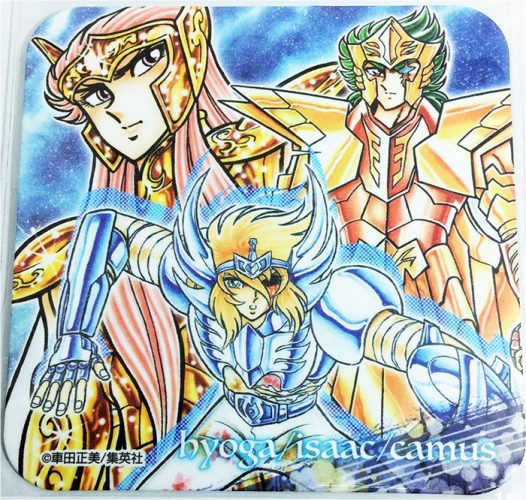

If you were to ask a younger Gen-X’er or an older millennial from Western Europe or Latin America what their favorite anime is, chances are Saint Seiya is going to be their answer. Even to this day, it still has a strong following in those nations. For those that enjoyed the Japanese version to this hit Shounen series, you probably love its explosive opening theme song, Pegasus Fantasy. Not only does it have a great soundtrack that gets your blood pumping, it has an amazing cast of who’s who in the world of Japanese voice acting. But just like a great portion of hit anime, it is based on a hit manga. We can’t say for certain which countries got the manga (we can confirm it did get an official English release in North America), but we think this would be a good time to share with some international fans who grew up on the anime, but never got the chance to read the manga to let them know some notable differences between the two.
The Bronze Saints Are All Half-Brothers
One significant difference between the anime and manga is that the manga states that the Bronze Saints, our main cast, are all half-brothers through Mitsumasa Kido as their father (however, Shun and Ikki share the same mother). This plot twist is revealed by Ikki upon his first defeat by Seiya. Shortly before he “dies,” he embraces Seiya as his brother and tells him the truth. Because of this plot twist, the reasoning to his motivations for sabotaging the Galaxian Wars and wanting revenge against Kido are slightly different in both versions. In addition to Ikki, Hyoga was also already aware of Kido being his true father prior to joining the Bronze Saints. As to why this was omitted from the anime, we have to guess that the broadcasting censors nixed it.
Hyoga
Hyoga’s initial role in the manga is significantly different from when he’s introduced in the anime, but his personality (especially in regards to his mother) remain the same. When he is first introduced in the manga, he’s actually a secret agent for the Sanctuary and is assigned to assassinate the Bronze Saints under the assumption they allied with a false Athena. Also, he joined the tournament because he wanted to kill Kido, his father for abandoning him and his mother. After he spent time with the Bronze Saints, he saw the light and chose to ally with his brothers instead. In addition, his relationship to Camus, the Aquarius Gold Saint, is more indirect in the anime. In the anime, Hyoga was trained by a Saint simply named the Crystal Saint, who was a disciple of Camus. When they meet in the anime, Hyoga acknowledges him as his master since he trained his master and that’s as far as their relationship goes. In the manga, the Crystal Saint never existed and Hyoga was directly trained by Camus himself. Plus, he has his own brief storyline exclusive to the manga where he fights in his home of Siberia, and we learn of his mother’s name, Natassia (a Russian way of saying Natasha). Last, most of the names of his techniques in the manga have Russian names as opposed to English ones.
Filler Characters and Arcs
In the anime, when the Bronze Saints are out of options against some Silver Saints, there are the Steel Saints who come from out of nowhere to help out. Unlike the regular Saints who channel an inner energy called Cosmos to unleash their strength, the Steel Saints use high tech armors to fight the forces of evil. Their role is rather brief when they fight the Silver Saints and after the Bronze Saints run off to Greece to save Athena, you never see them again. As for their presence in the manga, they were anime characters only. However, Saint Seiya Omega, a sequel to the anime, does further expand on their concepts and roles. In between the Sanctuary and Poseidon arcs, our heroes fight characters based on Norse mythology. It uses the same story telling and fighting structure as the Sanctuary arc but with characters from Norse mythology. Like the Steel Saints, the Asgard Arc is a filler series exclusive to the anime since it was caught up to the manga at that time. Due to the Asgard Arc, it changes the circumstances under how Poseidon is introduced in the anime.
Different Color Schemes
A lot of fans exclusively familiar with the anime see that Seiya is red (and white), Shiryu is green, Hyoga is blue, Shun is pink and green, and Ikki is a mix of silver, purple and orange. In the manga, the color schemes that Masami Kurumada, the original manga-ka provided, are significantly different. In the manga, Seiya’s armor is intended to be blue. Shun’s armor is largely pink and white, but actually has red/brown hair as opposed to green. Ikki’s armor is mostly supposed to be orange with white under clothing and Shiryu’s armor has a blackish tint with white under clothing. With Hyoga, despite white armor with blue under clothing, it’s the reverse in the manga.
Final Thoughts

With some of these changes, some of the fights play out differently which you have to see further to compare. The manga has much more fleshed out characters and it does a lot with Hyoga, who already has a great presence in the anime and manga. Plus, we kind of have to admit their original colors probably wouldn’t resonate in anime form, especially if you’re familiar with Super Sentai, which shares some qualities with Saint Seiya. In that genre, the Red Ranger is ALWAYS the leader, and we can assume that Toei felt the same when giving each character a color scheme, especially with Seiya wearing red. Either way, it hasn’t stopped it from being an international phenomenon but the anime is only the tip of the iceberg.
[recommendedPost post_id='245873' url='' title='' img='' class='' widget_title=''] [recommendedPost post_id='20690' url='' title='' img='' class='' widget_title='']
Add Comments